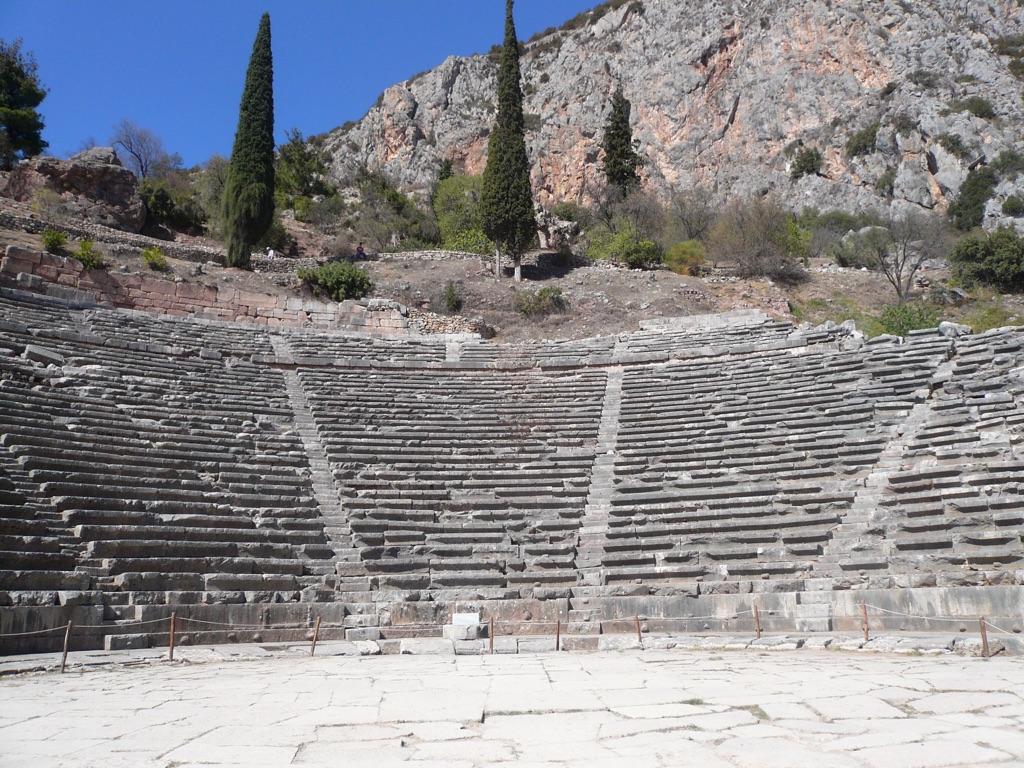Ancient Delphi, once considered the center of the world by the ancient Greeks, is a testament to the grandeur of Greek civilization. Nestled on the slopes of Mount Parnassus, this archaeological site was home to the famous Oracle of Delphi, where priests and priestesses delivered cryptic prophecies. The sanctuary of Apollo, the god of light, music, and harmony, was the heart of Delphi. Pilgrims from all over the Greek world visited the site to seek guidance. Today, Delphi is a UNESCO World Heritage site, attracting scholars and tourists alike, eager to explore its ruins and unravel its mysteries.
Get your dose of History via Email
Historical Background of Ancient Delphi
The discovery of Ancient Delphi dates back to the 19th century when archaeologists began systematic excavations. The French School at Athens played a pivotal role, starting their work in 1860. They unearthed the Temple of Apollo, the theater, and other significant structures. The site’s history stretches back to the 7th century BC, with evidence suggesting that the Mycenaean period saw early forms of worship there. Over time, Delphi became a cultural and religious hub, hosting the Pythian Games, similar to the Olympic Games.
The builders of Delphi dedicated it to the god Apollo, who, according to myth, slew the Python that guarded the site. The Amphictyonic League, a coalition of neighboring states, administered the sanctuary and the games. This league played a crucial role in maintaining the site’s neutrality, allowing Delphi to become a place for international diplomacy and political maneuvering.
Throughout its history, Delphi saw periods of prosperity and decline. It was sacked by the Persians in 480 BC and later by the Romans, yet it always recovered. The site was also a center for the worship of Dionysus, the god of wine and ecstasy. In the 4th century AD, with the rise of Christianity, Delphi’s influence waned, and the site was eventually abandoned.
Delphi was not just a religious center; it was also a place of great political significance. Leaders from all over Greece would come to consult the Oracle before making important decisions. The Oracle’s influence was such that no major action was taken without consulting it, from colonization ventures to war declarations.
The site was rediscovered with its ancient ruins providing a window into the past. Today, Delphi is recognized for its historical importance and its role in shaping the cultural and political landscape of ancient Greece.
About Ancient Delphi
Ancient Delphi was a marvel of construction, with buildings designed to inspire awe and reverence. The Temple of Apollo, the centerpiece of the sanctuary, was a Doric peripteral temple, meaning it had a rectangular floor plan with a series of columns surrounding it. The temple housed the adyton, the inner chamber where the Pythia, or Oracle, delivered prophecies.
The site also featured a theater, situated up the hill from the Temple of Apollo, which could seat around 5,000 spectators. Here, visitors could enjoy dramatic performances during the Pythian Games. The stadium, located further up the hill, hosted athletic contests. It was one of the best-preserved stadiums from ancient Greece.
The construction of Delphi utilized limestone and Parian marble for many of its structures. The Athenian Treasury, built to commemorate their victory at the Battle of Marathon, showcased intricate friezes and was constructed entirely of Parian marble.
Architectural highlights include the Tholos at the sanctuary of Athena Pronaia, with its circular plan and Doric columns. The Castalian Spring, with its rock-cut basin, was where visitors would purify themselves before consulting the Oracle.
The site’s layout reflects its complex religious and social functions, with numerous treasuries, monuments, and altars donated by various Greek city-states, demonstrating their wealth and piety.
Theories and Interpretations
Theories about Ancient Delphi often revolve around the Oracle’s prophecies. One popular theory suggests that ethylene gas, rising from a chasm in the earth, induced the Pythia’s trance-like state. However, this theory has been debated, with some scholars arguing against the presence of such gases.
The purpose of Delphi as a religious sanctuary is clear, but its role in politics and international relations is a subject of scholarly interest. The Oracle’s ambiguous prophecies could be interpreted in various ways, influencing key historical events.
Some mysteries of Delphi, such as the exact methods of the Oracle’s prophecy, remain unsolved. Historians match ancient texts with archaeological evidence to piece together the site’s function and significance.
Dating of the site has been carried out using various methods, including stratigraphy and radiocarbon dating. These techniques have helped establish a timeline for Delphi’s construction and use.
The interpretations of Delphi’s ruins continue to evolve as new discoveries and research shed light on this enigmatic site. Each finding adds a piece to the puzzle of understanding ancient Greek civilization.
At a glance
Country: Greece
Civilization: Ancient Greek
Age: Established in the 7th century BC
Conclusion and Sources
The information in this article has been obtained from the following reputable sources:

